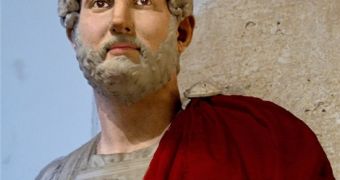Archaeologists carrying out excavations in Tivoli, some 20 miles (roughly 32 kilometers) east of the Rome, have recently announced the discovery of a fairly large tunnel that sits precisely beneath Roman Emperor Hadrian's villa.
The tunnel measures about 10 feet (3 meters) in width, meaning that it was probably big enough for Roman carts and wagons to fit through it.
Due to its impressive size, the tunnel has been named Strada Carrabile, or the Great Underground Road. Apparently, it first runs northeast, and then switches to the villa's southern areas.
Investigations have revealed that both this tunnel and several smaller ones in its proximity most likely served to transport slaves, food and other goods.
Apparently, the Emperor could not stand the sight of slaves, animals and whatnot being moved around, and therefore ordered workers to build these tunnels in order to conceal them from view.
Archaeologists argue that, given the complexity and the size of this network of tunnels, saying that the structure very much resembled an underground city might not be that far off.
“These tunnels lead us to understand that Hadrian's Villa was organised less like a villa and more like a city,” archaeologist Benedetta Adembri reportedly told the press, as cited by Daily Mail.
“Hadrian was obsessed with solitude. He went to Tivoli to get it but was surrounded by people. That could help explain why he put so much of the life of the villa underground,” one other researcher, Marco Placidi, explained.
A large portion of the recently discovered tunnel is still blocked by debris and rocks.
Archaeologists are using robots fitted with cameras to investigate these areas, and hope they'll soon have more information concerning the tunnel's architecture.
In its heydays, Emperor Hadrian's villa in Tivoli covered an impressive 296 acres. It was made up of roughly 30 major buildings, i.e. living quarters, pavilions, libraries and spas, and several fountains, gardens and pools.

 14 DAY TRIAL //
14 DAY TRIAL //